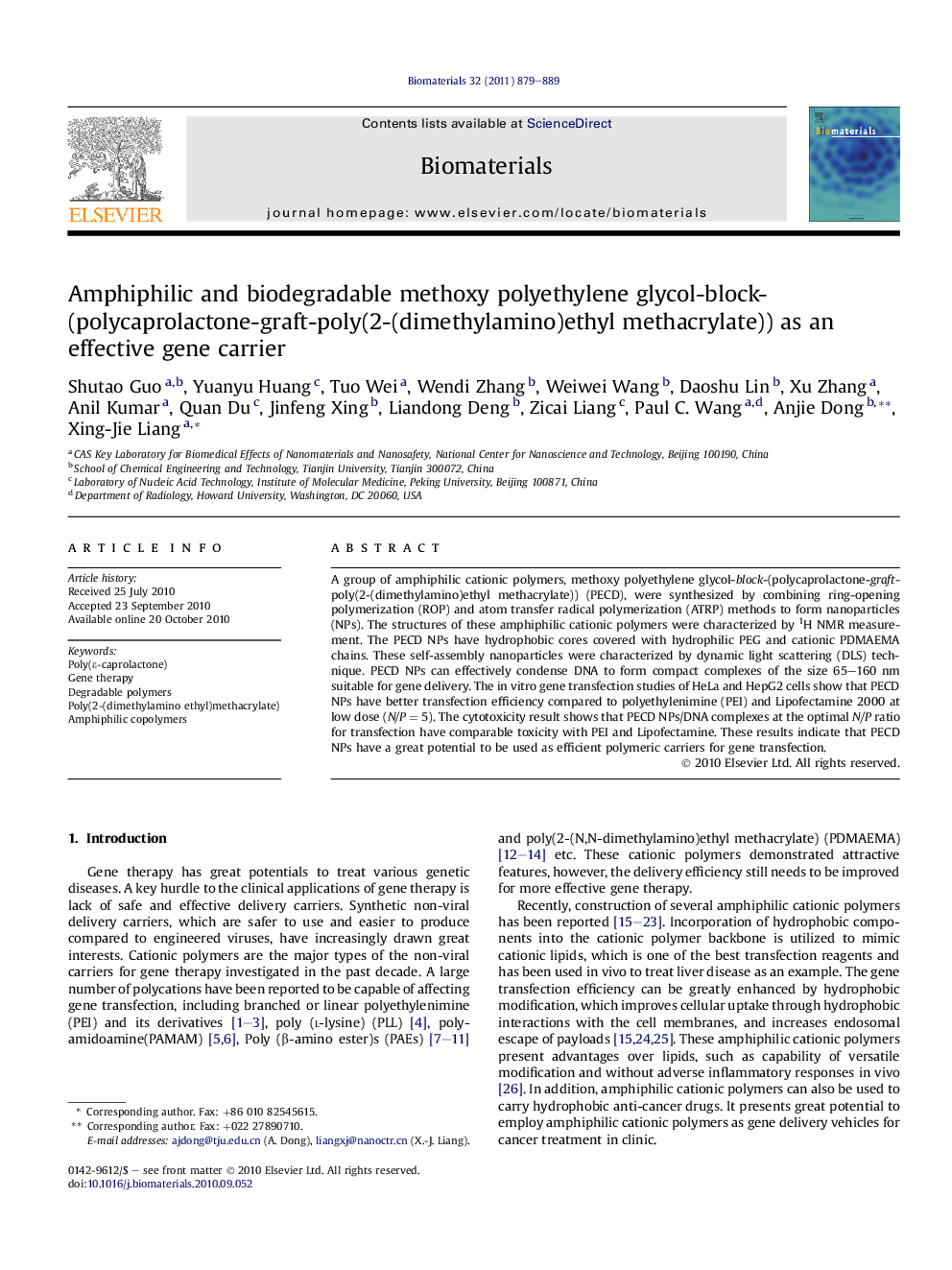| کد مقاله | کد نشریه | سال انتشار | مقاله انگلیسی | نسخه تمام متن |
|---|---|---|---|---|
| 7593 | 557 | 2011 | 11 صفحه PDF | دانلود رایگان |

A group of amphiphilic cationic polymers, methoxy polyethylene glycol-block-(polycaprolactone-graft-poly(2-(dimethylamino)ethyl methacrylate)) (PECD), were synthesized by combining ring-opening polymerization (ROP) and atom transfer radical polymerization (ATRP) methods to form nanoparticles (NPs). The structures of these amphiphilic cationic polymers were characterized by 1H NMR measurement. The PECD NPs have hydrophobic cores covered with hydrophilic PEG and cationic PDMAEMA chains. These self-assembly nanoparticles were characterized by dynamic light scattering (DLS) technique. PECD NPs can effectively condense DNA to form compact complexes of the size 65–160 nm suitable for gene delivery. The in vitro gene transfection studies of HeLa and HepG2 cells show that PECD NPs have better transfection efficiency compared to polyethylenimine (PEI) and Lipofectamine 2000 at low dose (N/P = 5). The cytotoxicity result shows that PECD NPs/DNA complexes at the optimal N/P ratio for transfection have comparable toxicity with PEI and Lipofectamine. These results indicate that PECD NPs have a great potential to be used as efficient polymeric carriers for gene transfection.
Journal: Biomaterials - Volume 32, Issue 3, January 2011, Pages 879–889